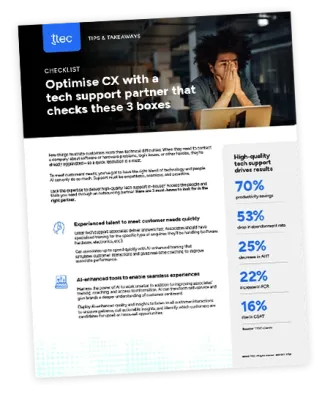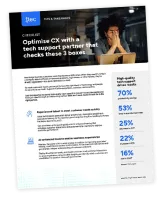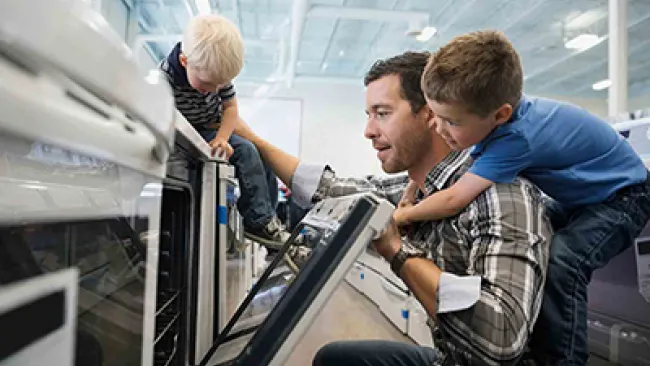In today’s uncertain economic environment, customer experience and customer service have become critical topics. But while these terms are often used interchangeably, there are crucial differences between them.
Understanding those differences and how they intersect is important for building robust customer relationships and increasing the bottom line. We’ll review each term and explain how to translate customer service and customer experience into a business advantage.
What is customer service?
Customer service refers to the assistance and advice that a company provides consumers who purchased its products and services, or are considering making a purchase and need more information. Customer service associates provide assistance on how to best use a product, repair it, trouble-shoot issues, and fulfill requests, such as processing a refund.
Customer service interactions occur across different channels—self-service, mobile messaging, live chat, email, social media, voice—that are powered by a mix of humans and digital tools. A common objective of customer service is to increase customer satisfaction and customer loyalty, as well as close a sale.
When customers have a problem, the quality of the customer service can make or break customer retention. In the early days of the COVID-19 pandemic, for instance, contact centres experienced overwhelming volume from customers who were calling to cancel subscriptions, reschedule flights, freeze memberships, etc. Companies have gone to great lengths to retain customers by providing excellent customer service through empathetic support and flexible policies.
What is customer experience?
The difference between customer service and customer experience (CX) is that customer service is one piece of the puzzle that is focused on supporting customers while customer experience represents the entire puzzle or the sum of the interactions customers have with a brand.
CX encompasses the entire customer lifecycle: from discovering and researching a product to purchasing and using the product and following up with the brand post-purchase (interacting with customer service). Customer experience measures how customers feel about a brand overall and includes the emotional and psychological connection customers have with a brand.
Customer service and customer experience best practices in a new normal
A few years ago, Gartner identified customer experience as the “new competitive battlefield,” noting that other differentiators such as price and product features had been standardised and commodified. The pandemic both accelerated and upended that trend when it changed the way many people interact with brands.
In a world where, more than ever, competitors are just a “tap” away, customers are increasingly bouncing between different brands and channels but are loyal to the businesses that deliver the best customer experience. As such, it’s important to focus on customer service and other touchpoints as part of a holistic approach.
Focus on the experience from beginning to end. Customers don’t distinguish between a company’s channels or departments; they expect a frictionless journey whenever and wherever the interactions take place. Ensure that customer service associates have a comprehensive view of the customer’s purchase history and past interactions across all channels so that they can provide relevant and personalised advice.
Customer-centric companies also make it a best practice to look at the world through their customers’ eyes and align business functions around customer needs. Reports show that the COVID-19 pandemic has redefined customer priorities around convenience, cleanliness, and safety. Prioritising services such as contactless deliveries and spacious seating therefore make sense, but companies should keep a close watch on customer priorities to ensure they’re always delivering the right customer experience.
What matters to customers will continue to shift, but by understanding what customers prioritise and value, and redesigning business operations around those priorities accordingly, companies can turn their customer service and customer experience into a true business advantage, every time.
Learn more
Here are additional resources for delivering a differentiated customer service and customer experience.
The Real Cost of Customer Experience – Offering an outstanding end-to-end customer experience—including everything from marketing to packaging to product design to support to cross-sales—takes work, and investment. But the investment is worthwhile.
Reinvent the “New Normal” Customer Experience – There’s a mantra for the new normal: Don’t waste my time. The novel coronavirus sent organisations scrambling to assert their dominance in the digital space, and with this came a renewed focus on seamless, easy interfaces across all channels.
3 Elements That Power Effortless Customer Experiences – Understanding where your customers are and how to reach them in a seamless fashion is the cornerstone of any modern customer experience.
Innovating in Customer Experience Management from Northern Ireland – Learn why Northern Ireland is gaining traction as a destination of choice for customer experience support.














